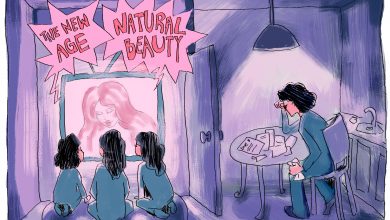On Male Birth Control: Whiny Men Aren’t the Problem, Invalidating Women Is

Image by Nate Grigg via Flickr / CC BY 2.0
In recent news a promising clinical trial of an injectable hormonal contraceptive for men was discontinued after being reviewed by an independent committee. The injections were designed to suppress sperm concentration to prevent pregnancy, subsequently boasting 96 percent effectiveness rate. But the party responsible for the discontinuance determined that “the risks to the study participants outweighed the potential benefits.”
Such risks include pain at the injection site, increased libido, acne, muscle pain and depression or other mood disorders. Although a relatively large percentage of the participants said they experienced these side effects during the study, most considered the symptoms relatively mild and nearly 75 percent said they were satisfied or very satisfied with the method.
Most news outlets covering the topic stressed the side effects and formed two major camps. The first argues that because women face almost these exact same effects, the study was wrongfully or unnecessarily stopped. As The Atlantic points out, many of the most commonly recommended, FDA-approved forms of female hormonal birth control cause not only acne, libido changes, and/or mood disorders, but also pelvic or abdominal pain, ovarian cysts, and possible sepsis and perforation of the uterus (in the case of the IUD). They noted a blatant inequality between what is considered “unacceptable” for men and women.
Most articles of this type come to the same conclusion that although men share the same responsibility for prevently unwanted pregnancies, women are the only ones expected to protect themselves and their partners from them.
In camp number two, the opposite is argued, with many stating that “it wasn’t because the men who participated in it were wimpy,” it’s that the adverse effects were happening at an alarmingly high rate. Even though it’s easy to blame the male subjects for the inequality in birth control options, it really isn’t their fault, especially considering how many of them wanted to actually continue using the shot.
While each gives a fair assessment of not only the original story, but the subsequent backlash, both are missing an essential point. Since their inception, hormonal forms birth control have come with a lengthy list of side effects, but they’ve only been thoroughly addressed when the complainants were male. Which is not to say that men should have to endure what women do daily. It’s that no person should have to endure these effects in the first place.
To give historical context, the early stages oral contraceptive development were marked with difficulties in keeping women in studies due to overwhelming complaints of bloating, potentially fatal blood clots, and mood changes. In an in-depth analysis of its origins, Bethy Squires explains how no matter how many sample groups dropped out of their studies, the researchers continued their work. In the 1950s and 1960s, they moved from the continental US to Puerto Rico where forced sterilization and little birth control restrictions had become the norm. Still, the researchers could not get a group to withstand the side effects. Eventually this lead to forced testing on women in Massachusetts mental hospitals and Puerto Rican medical schools. Both groups were told nothing about the research, only that they had to participate even though they faced almost innumerable side effects.
These women’s objections were never taken seriously, the negative reactions were overlooked, and the pill was released to the general public in a form ten times stronger than needed for its intended purpose.
Only after The Nelson Pill Hearings did the concentration of hormones in the pill decrease, making the side effects less extreme, but nonetheless still present. Even though the formula changed, women still experienced and voiced their concern regarding its side effects, going unheard for the most part. As Squires states, people believed that “women would tolerate side effects better than men, who demanded a better quality of life.”
This belief is still ingrained in us today. We accept female pain and emotional suffering as the status quo, any complaints are disregarded as dramatic and overblown. In 2016, over 60 years after the initial trials in Puerto Rico, the first study on the link between birth control and depression was released. It took this long for the grievances of women to be even acknowledged, but a male equivalent to available contraceptives still hasn’t been released for fear of almost exactly the same side effects.
So I’ll reiterate, no one should have to experience the adverse effects that these studies entail, but even today, it still takes a man complaining for anything to get done.




